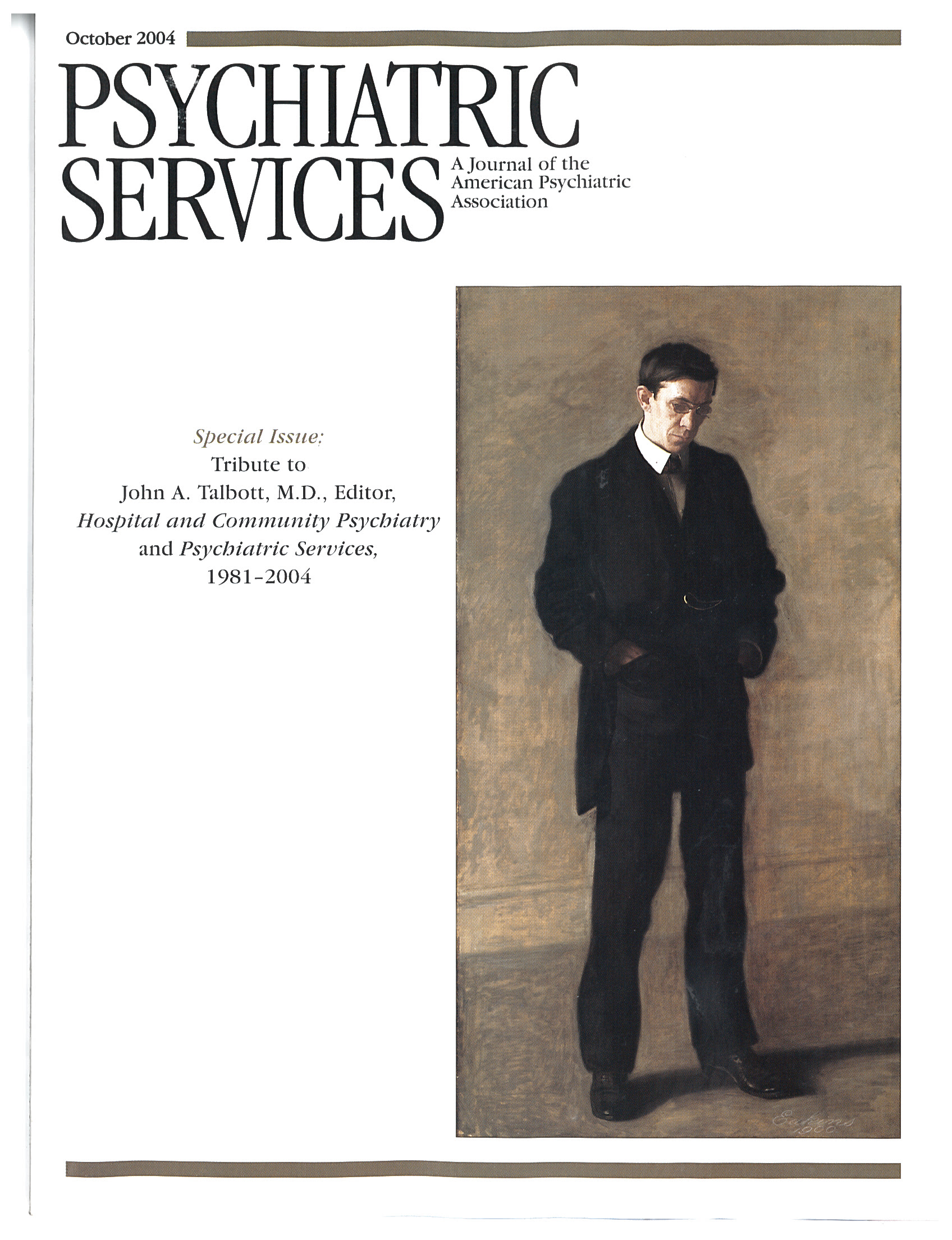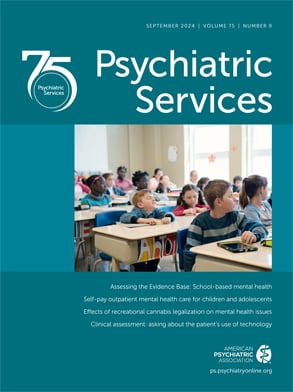Reading the chapter reprinted here reminds me of the first time I met John Talbott. I believe it was in 1985, not long after I became executive director of the National Alliance for the Mentally Ill (NAMI). Dr. Talbott was speaking at NAMI's national convention, having received the organization's highest award. I was just learning my way around all the issues and controversies in the field. Most of what I heard at the national meeting was about the brain. Everyone was excited about new research that was focused on finding the cause of and cure for mental illnesses.
After several days of presentations on synapses and neurotransmitters, Dr. Talbott's speech brought the audience back to the basics. Just as he does in this chapter, he reminded NAMI members about how far psychiatry had come. He also placed the current challenges in a historical context. As I recall, in his remarks he spoke about the need for new and better treatments; clozapine and second-generation antipsychotics were still some years in the future. But he also noted that individuals with chronic mental illness needed access to new types of services. Dr. Talbott's focus on psychosocial rehabilitation was refreshing, and he described emerging research that offered hope for improved functioning.
Dr. Talbott made it clear that, in his opinion, psychiatry was just beginning to understand the complex needs of persons with schizophrenia. Even in 1985, a decade before this chapter was published, he made a strong case for comprehensive, community-based treatment. And he recognized that good treatment is "much more than a pill and doctor visit." At a time when many families looked exclusively to pharmacological solutions for schizophrenia, he insisted that so-called "auxiliary treatment" was, in fact, central to stability. More than that, Dr. Talbott talked about the need for improved quality of life for patients and families.
This advocacy for comprehensive community services that he mentions in the chapter was a key take-home message for the NAMI convention attendees. Dr. Talbott saw earlier than most of his colleagues the potential for change that was represented in the expanding family and consumer movement. His talk affirmed the experience of the typical NAMI member. He knew that many parents had run out of health insurance, spent all their savings, mortgaged their home, and become lay experts in managing psychosis. Indeed, many parents were full-time providers of the only residential and rehabilitative services available to their son or daughter. These parents feared that their adult child would become homeless without this ongoing family support.
Dr. Talbott told NAMI members that they were "experts by experience" and that the fact that they learned day to day, year to year, on the job had enormous value for a changing mental health system. Don't sell yourselves short, he said. Use what you've learned through many hard times to press for reform. And although the powerful idea of recovery had not yet taken hold, he received loud enthusiastic applause when he declared that "people with chronic mental illness can do better—much better."
He knew that families were playing a critical role at a critical time. As "case managers by default" NAMI members were in regular contact with the mental health system at many levels. Members saw firsthand the fragmentation and gaps in service. Even in 1985 Dr. Talbott recognized that most patients received care that was barely adequate and rarely therapeutic. He understood how easy it was to fall out of services, drift away from family support, and end up in a homeless shelter or jail. When he asked the audience to raise their hands if their loved one had ever been homeless or incarcerated, fully a quarter responded. "That's not acceptable, and you must not accept it," he declared.
Dr. Talbott then talked about some of the community support services that could make a difference—clubhouse programs like Thresholds in Chicago and Fountain House in New York. He described the Program of Assertive Community Treatment, based in Madison, Wisconsin, and backed by impressive research. These innovative approaches to community treatment featured "no-reject" policies and offered continuity of care. In fact, these services operated much like a caring family—offering continuous encouragement and support to patients as they struggled with symptoms and regained strength. To me it all sounded amazing, wonderful, and rare.
NAMI members have a right to these services, Dr. Talbott went on to say. These programs can work for even the most disabled patient and work far better than widely available "day treatment." I remember him remarking that it was "a crime" to put thousands of young people in what were essentially nursing homes for young adults, when it was clear that they deserved more. That phrase—"they deserve more"—brought tears to many eyes and proved to be a lasting inspiration.
Advocacy for clubhouse programs and assertive community treatment programs became a hallmark of NAMI. Many NAMI grassroots leaders first heard of the possibility for improved outcomes for persons with serious mental illness in that speech by Dr. Talbott. People went home charged up for change and ready to push for the type of rehabilitation programs that he described and recommended. A whole new kind of advocacy opened up in communities across the nation. Linked with the Community Support Program of the federal government, NAMI members became tireless activists for psychosocial rehabilitation as an essential service for persons with mental illness.
In fact, this practical plainspoken and respected psychiatrist made it clear that while scientists sought causes and cures in the laboratory, we could help our loved ones today. His affirmation of family experience and inspiration to work for better services helped shape a decade of explosive growth in the organization. People who had been stuck in despair and who found support groups little more than "pity parties" found new energy and hope in fighting for better services. A fledging advocacy movement was helped immeasurably by Dr. Talbott's championing of our cause. He planted the seeds of what came to be known as a "right to recovery." Dr. Talbott told us it was our job to demand and expect a better future for those we love. And then he rolled up his sleeves and worked with us to achieve these goals—as president of the American Psychiatric Association, as an influential writer, and as an academic leader. We still have a long way to go to achieve the future that he urged us to imagine at that NAMI convention almost 20 years ago. We are truly grateful for the clarity of Dr. Talbott's moral vision, the strength of his leadership, and his persistence in caring.

